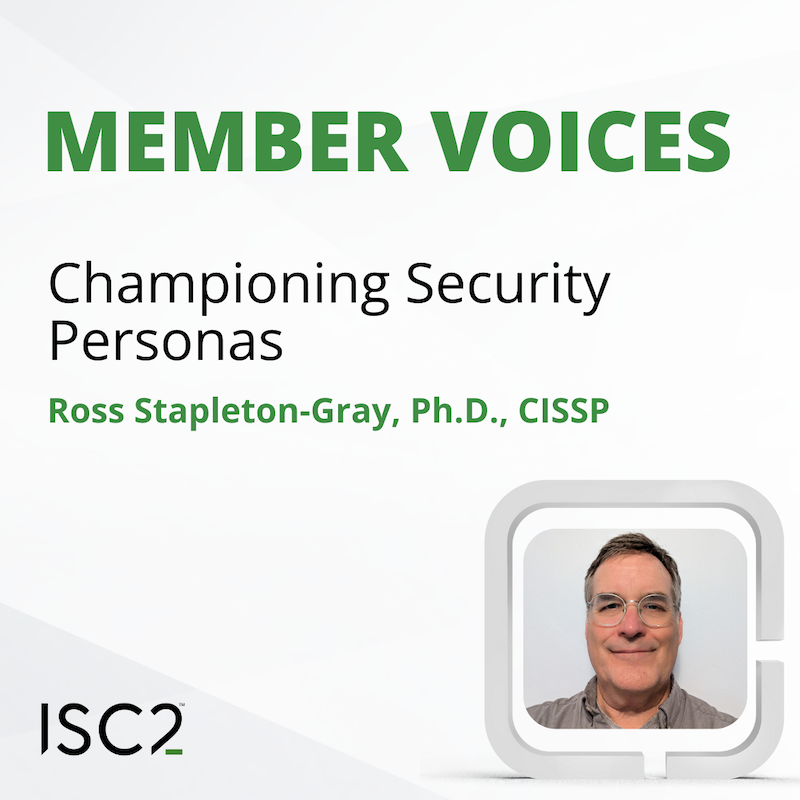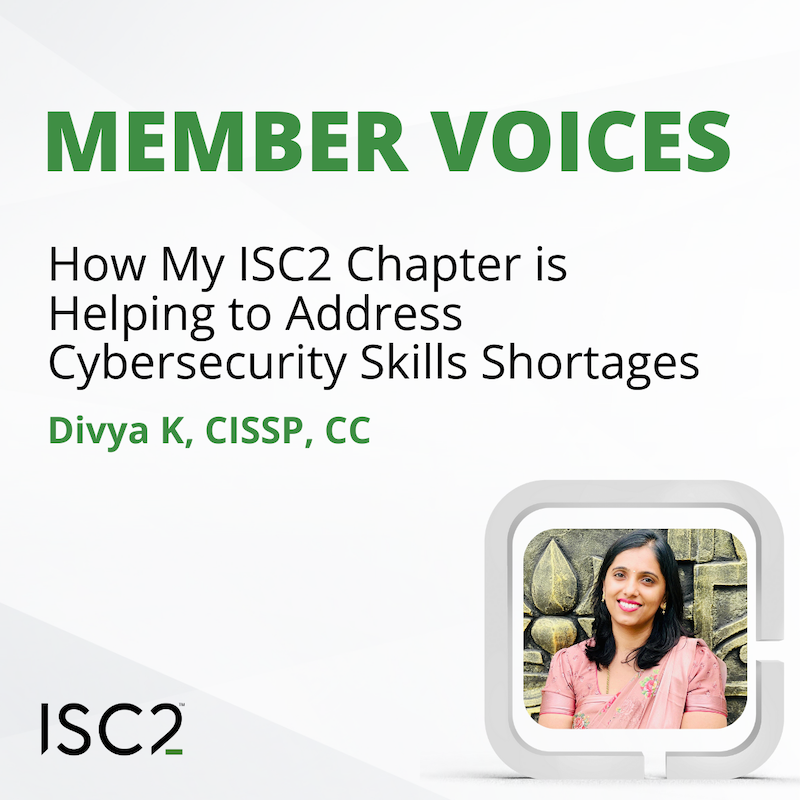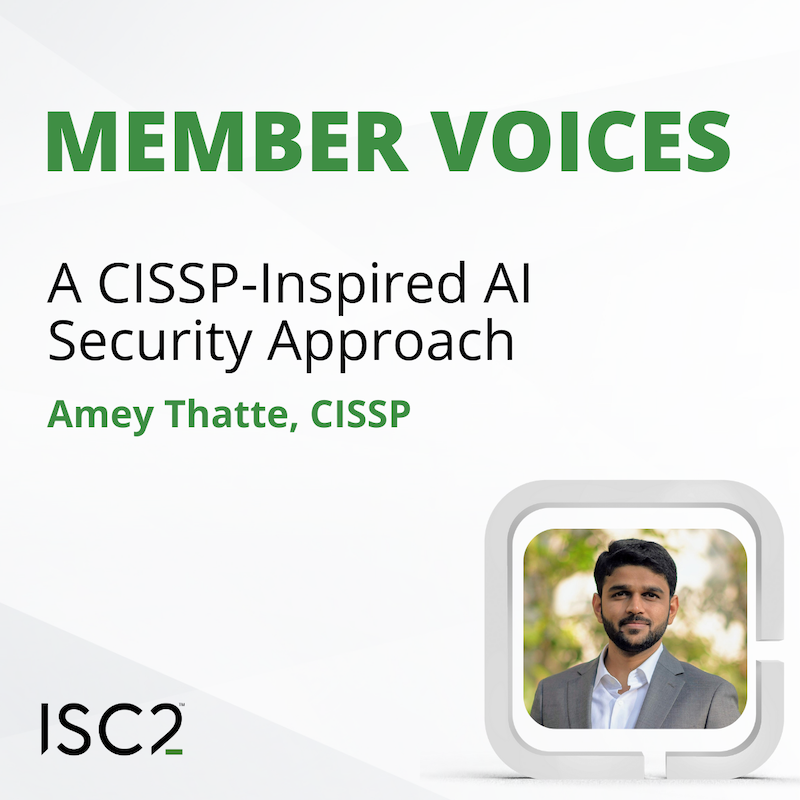Preparing for a cybersecurity certification exam is no small feat; these are prestigious certifications that require not only deep technical knowledge, but also mental resilience and strategic preparation. ISC2 instructor Sudesh Kannan, Ph.D., CISSP, CGRC, CCSP, shares tips from him and his students to help you prepare for a certification exam.
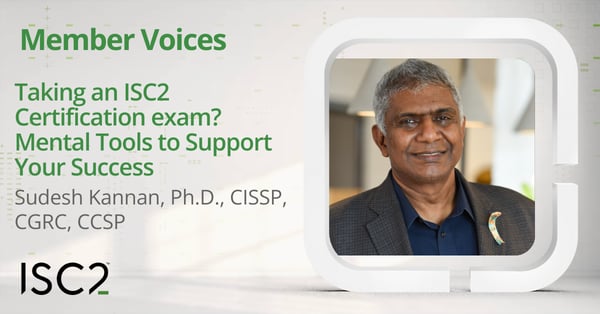 Disclaimer: The views and opinions expressed in this article belong solely to the author and do not necessarily reflect those of ISC2.
Disclaimer: The views and opinions expressed in this article belong solely to the author and do not necessarily reflect those of ISC2.
One of the most challenging aspects of my role as an ISC2 instructor is to impart not only technical knowledge, but also to provide the motivational support and mental tools that are crucial for success in high-stakes certification exams. Over time, I have observed that some students struggle with exam preparation not because of a lack of knowledge, but due to anxiety, self-doubt and an overwhelming sense of pressure. Here, I offer seven powerful strategies that I have found to be useful for students, helping them to maintain focus, reduce stress, and optimize their study process.
Create a Flexible Study Plan
Having a study plan is essential for staying organized and accountable during certification exam preparation - as for any study process. However, flexibility is key; rigid plans can lead to frustration if life gets in the way or if certain topics take longer than expected.
To keep it flexible, create a schedule that outlines what topics you'll cover each week, but build in flexibility by allowing extra time for review or unexpected delays. Hold yourself accountable by setting small goals each day, but be kind if adjustments are needed.
Example: If you planned to complete two CISSP domains this week but only finished one due to work commitments, adjust next week’s schedule without guilt. Flexibility ensures consistent progress without burnout.
Journaling: Clear Your Mind Through Writing
One of the most effective ways to manage stress and anxiety is through journaling. Often, our minds get cluttered with thoughts that loop endlessly, creating more anxiety than clarity. Writing your thoughts down helps you sort through these feelings and identify what’s really bothering you. Here’s how to do it:
Set a timer for five or 10 minutes. Write continuously without editing or stopping. Let your thoughts flow freely onto the page – don’t worry about grammar or structure, this exercise is for you, not anyone else.
Example: Before starting a study session, you might feel anxious about how much material you have left to cover. Instead of letting that anxiety take over, write about it. You may discover that the anxiety isn’t about the amount of material, but rather about feeling unprepared in one specific domain. This realization can help you focus on that area instead of feeling overwhelmed by the entire syllabus. Creating well-indexed notes and exam study guides often help to manage the study material into managed chunks.
The 5:1 Ratio: Reframe Negative Thoughts
When preparing for an important exam like the CISSP, negative thoughts are inevitable. However, dwelling on them can create a downward spiral. The 5:1 ratio technique encourages you to counterbalance every negative thought with five positive or neutral ones. Here’s how to employ it:
For every negative thought (for example, "I’ll never remember all these terms"), think of five positive or neutral thoughts (such as "I’ve already mastered several domains," or "I passed my last practice exam," or "I’m getting better every day").
Example: If you find yourself thinking, “I’m terrible at cryptography,” counter it with thoughts like “I have time to review,” “This is just one part of the exam,” “I have resources to help me,” or “I’ve overcome challenges before.”
Action to Decrease Anxiety
One of the best ways to combat anxiety is by taking action. Often, anxiety builds when we feel stuck or uncertain about what to do next. By taking small steps, however minor, will reduce that feeling of helplessness.
Here’s how to do it:
Break your study sessions into small, manageable tasks. Start with something simple like a five-minute review session or completing one quiz question. For example: If you’re feeling anxious about an upcoming practice exam, start by reviewing just one topic for five minutes or answering five practice questions. This apparently small action will build momentum and reduce your overall stress. Many of my students used regular physical activity – exercise at the gym or walking/hiking – to reduce anxiety levels.
The Pie Chart of Preparation
Exams for certifications like the CISSP and CGRC are not just about book knowledge; they are also about applying your experience and skills in real-world scenarios. To remind yourself of this, create a pie chart that represents all the elements contributing to your success beyond just studying. Here’s what I mean:
Draw a pie chart and label different sections with categories such as “Experience,” “Knowledge,” “Skills,” “Perseverance,” “Focus” and “Preparation”. Visualize how each piece contributes to your overall readiness for the exam. You might realize that while you’re still studying certain topics, your years of experience in cybersecurity already give you an edge in areas like risk management or network security. This broader perspective boosts confidence and reminds you that success isn’t solely dependent on memorizing facts.
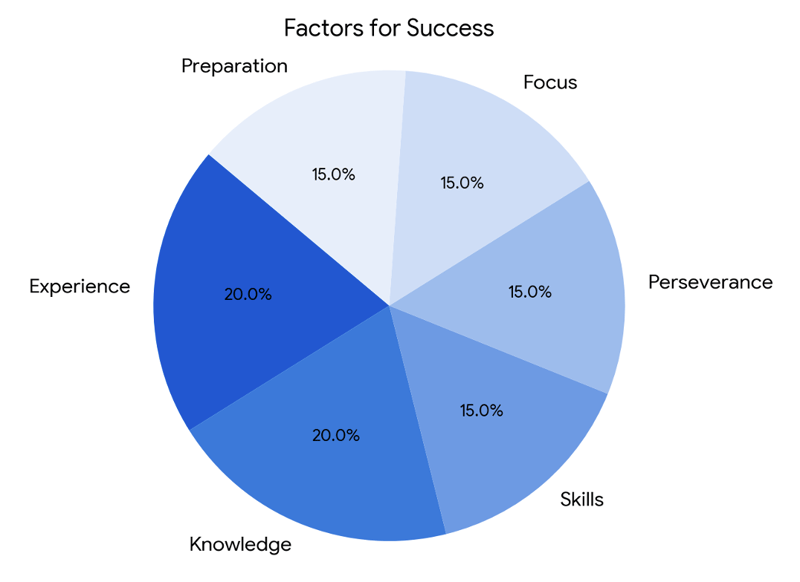
Use a Mental Stop Sign
Overthinking is commonplace. When you catch yourself spiraling into repetitive negative thoughts or worries, visualize a stop sign as a reminder to interrupt this pattern. I advise students to take a deep breath and redirect their focus back to something productive, such as reviewing flashcards or taking a short break.
Example: If you find yourself obsessing over how difficult one domain seems, visualize the stop sign and remind yourself that worrying won’t change the outcome—but reviewing key concepts will.
Bonus Tip: Engage With Your Support Network
Preparing for an exam like the CISSP can feel isolating at times – but remember, you’re not alone! Reach out to friends, family members, or colleagues who have taken similar exams or worked on challenging projects for advice and encouragement. Consider:
- Talking with peers who have passed certification exams like the CISSP and CGRC for insights into their strategies
- Share your progress with family members who can offer emotional support
- Joining online forums or study groups where others are preparing for the same exam
Check in with someone who has passed the CISSP to find out how they managed their time leading up to the exam day or how they handled nervousness and anxiety during test-taking; their perspective can provide practical tips and reassurance that you're on the right track.
Perhaps some, or even all, of these tips sound obvious? Maybe – but pressure is an uncomfortable bedfellow. Some candidates may be returning to study many years after their last formal exam. The feedback from my students has been overwhelmingly positive, with many expressing that these tools were as valuable as the technical content itself. Remember: success is not just about what you know; it's also about how well you manage your mind throughout this journey.
| Mental Tool | Description | Example |
| Create a Flexible Study Plan | Stay organized with a study plan that allows flexibility for unexpected delays. | Adjust your weekly schedule without guilt if life gets in the way of your study plan. |
| Journaling | Clear your mind through writing to manage stress and anxiety. | Write continuously for 5-10 minutes to identify specific areas of concern. |
| The 5:1 Ratio | Reframe negative thoughts by countering each with five positive or neutral ones. | If thinking "I’m terrible at cryptography," counter with thoughts like "I have time to review." |
| Action to Decrease Anxiety | Take small, manageable actions to reduce feelings of helplessness and anxiety. | Review one topic for five minutes or answer five practice questions to build momentum. |
| The Pie Chart of Preparation | Visualize all elements contributing to success beyond studying by creating a pie chart. | Draw a pie chart with sections like "Experience," "Knowledge," and "Skills" to boost confidence. |
| Use a Mental “Stop” Sign | Interrupt repetitive negative thoughts by visualizing a stop sign and redirecting focus. | Visualize a stop sign when overthinking and redirect focus to productive tasks like flashcards. |
Acknowledgements
Many of these techniques were suggested and verified by my students. I acknowledge Rashard Young, CISSP and Frédéric Selvais, CISSP for reviewing this article and making appropriate recommendations and suggestions.
Sudesh Kannan, CISSP, CGRC, CCSP, is a certified Instructor for ISC2 and has over 13 years of experience in information security innovation, modelling cyber risk, training and development. He has held business management, R&D management and technical sales management roles, with responsibility for leading technical projects and driving organizational change. His cybersecurity work spans cloud security, governance, risk management, privacy and compliance. Through mentoring and training, he fosters growth and excellence in the cybersecurity field as an adjunct Professor at University of Maryland Global Campus.
Related Insights
